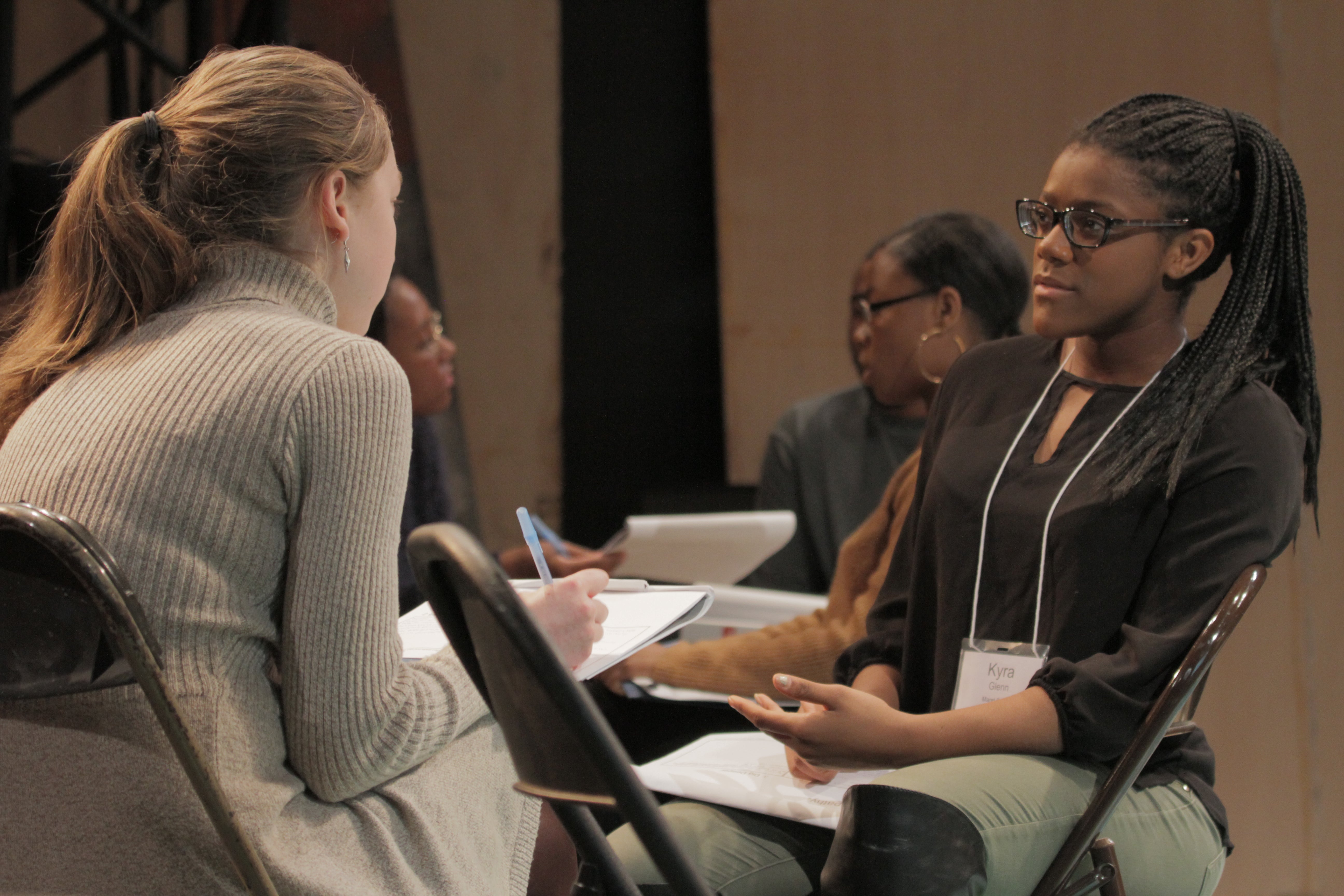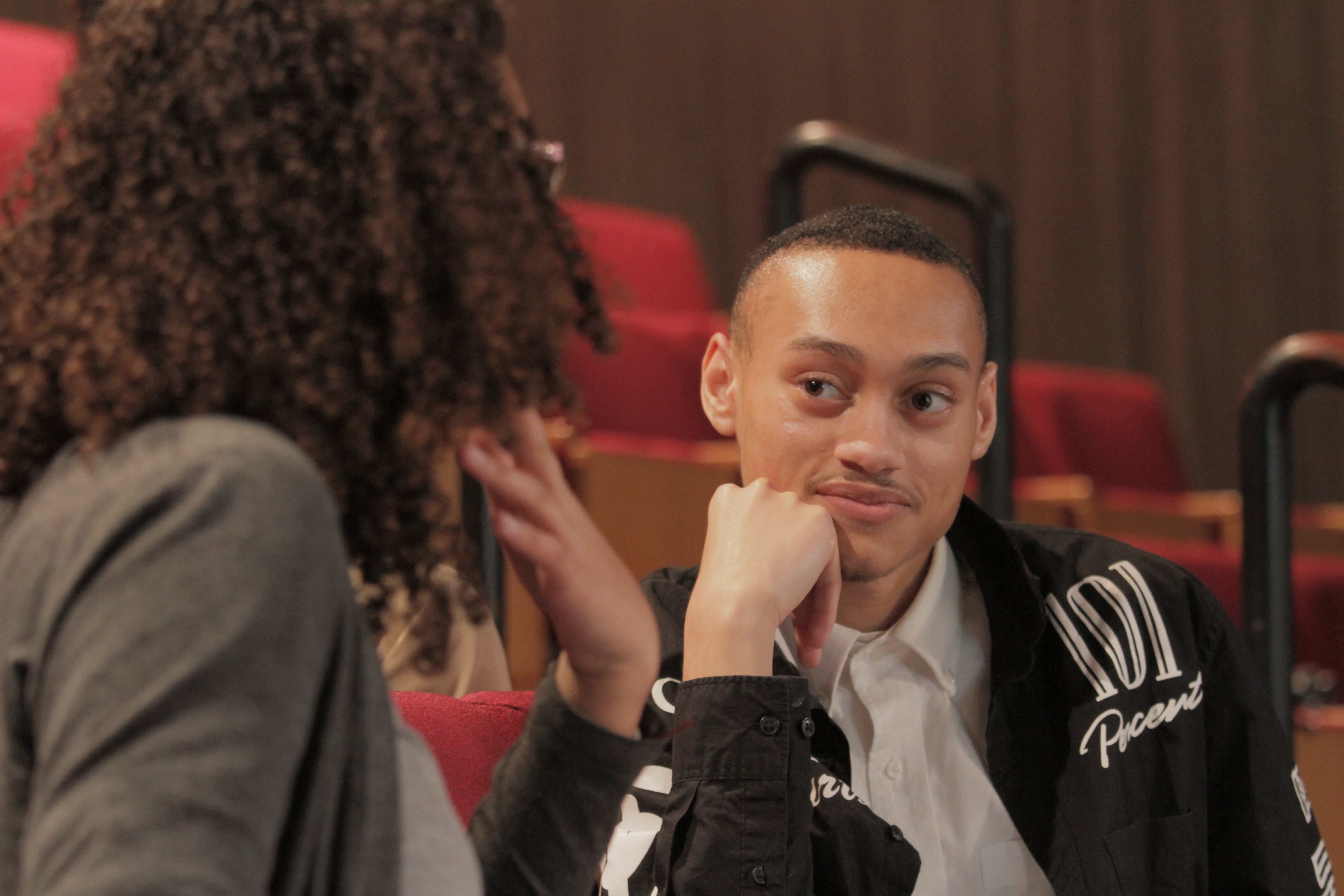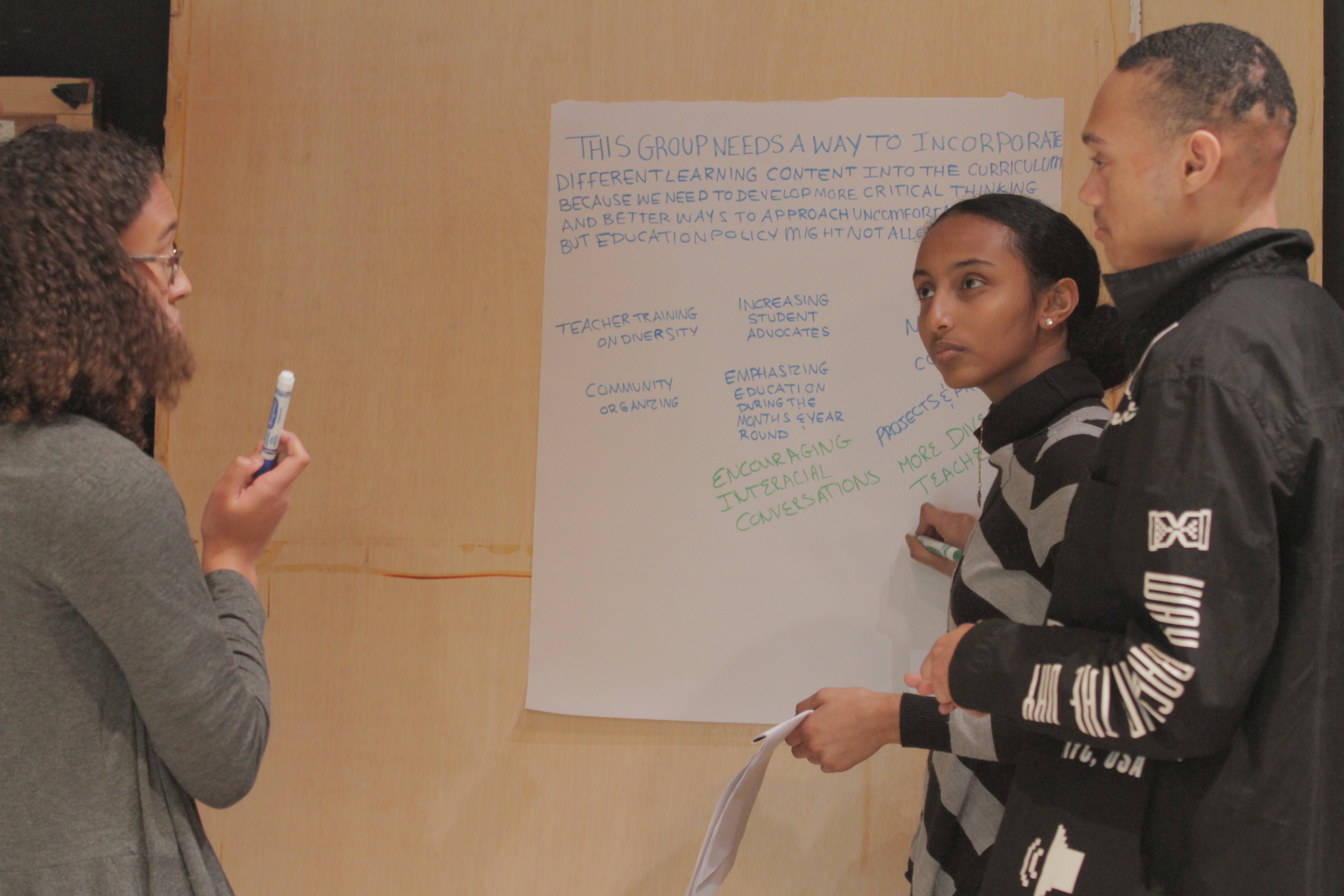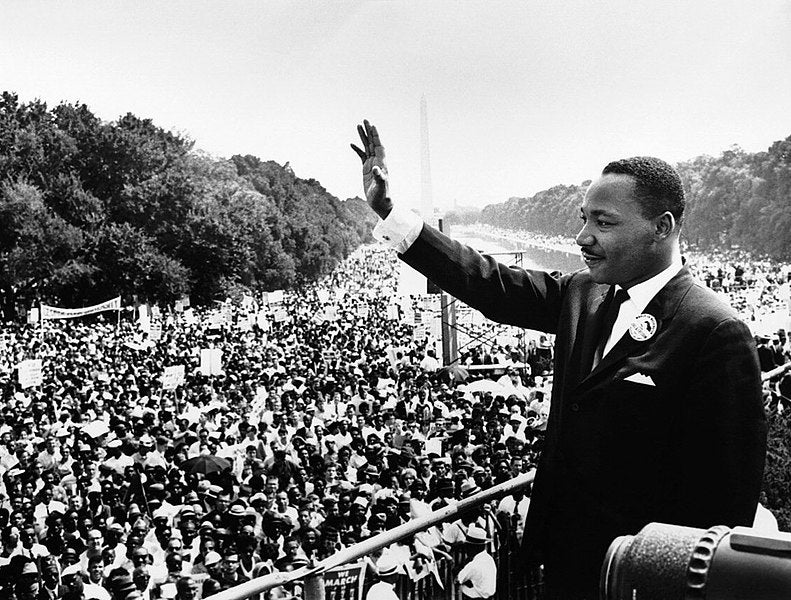This past weekend, 17 D.C., Maryland, and Virginia metropolitan area (DMV) high school students participated in a two-day seminar on race and equity through the AspenX program at The Aspen Institute. Fellowship for Race & Equity in Education founder and CEO Michelle Molitor moderated the discussion that centered on the questions: ‘how did we get here?’ and ‘where do we go next?’
Day one of the AspenX experience took students through an experiential learning module at the Smithsonian National Museum of American History where they were led on a guided tour though exhibits relevant to the conversation on race and equity. Exhibits visited included the Greensboro, NC Woolworth lunch counter from the Civil Rights Movement, the ‘Everyone Plays!’ exhibit on sports and disability, and the new exhibit on the Japanese American incarceration era during World War II – Righting a Wrong. Students also got to see objects out of storage from the Bracero Program, a government-sponsored Mexican guest worker program that lasted from 1942 until 1964.
Day one concluded with a walk to Pi Pizzeria for an evening of socializing and bonding over dinner. Participants challenged first impressions about each other by sharing personal facts that you can’t guess just by looking at them.
Students were welcomed to the Gala Hispanic Theatre in Columbia Heights on day two for a full day of discussion framed by excerpts from books, news and academic articles, news videos, documentary film clips, and submissions to The Race Card Project – now part of The Bridge, The Aspen Institute’s new program on race, cultural identity, connectivity, and inclusion – a dynamic new endeavor powered by the Peabody Award-winning Race Card Project founded by former NPR Journalist Michele Norris.
The day of discussion was divided into three sessions that were differentiated by unique mindset objectives.
Empathy

Through the lens of Native American history, immigration, and the balance between gentrification and revitalization, students were asked to contemplate the effect of our nation’s history on the experiences of today’s youth. Participants unpacked the meanings of race, gentrification, micro aggression, colorism, and implicit bias as they relate to our country’s past transgressions including but not limited to genocide, slavery, and discrimination.
Critical Thinking and Questioning

Among the materials that framed the discussion in session two around critical thinking and questioning were Michelle Alexander’s The New Jim Crow and the Netflix original documentary 13th. In this session, participants were tasked with processing different perspectives of the intersection between race and the criminal justice system. After a discussion around the spectrum of viewpoints and opinions on this issue, students were challenged to delve deeper into the roles that implicit and explicit biases play in our institutions. Students were not shy when asked to envision ways that they see the American criminal justice system evolving.
Compassion and Action

Dr. King’s Letter from Birmingham City Jail and Ta-Nehisi Coates’ Color-Blind Policy, Color-Conscious Morality were among the materials that colored the conversation in session three. Here students were asked to assess the current state of our union and the evolving strategies of leadership. The conversation turned political when participants were prompted to predict a path forward given the changes we can expect from the knowledge we currently have. While opinion varied in respect to the current direction of race relations in our nation, all youth expressed hope and optimism when asked to define what their own roles might be in shaping the world we live in. In teams of four to six, students developed solutions to interrupt inequity. Solutions included a peer mentor program, a student advisory council, a student leadership committee, and recurring roundtable discussions.
“I am so impressed by the deep commitment of these young people to learning more about the history of our country and how it perpetuates racial inequity today,” said AspenX Senior Program Associate Rachel Sverdlove. “Each of them brought their full selves to the discussion and challenged their own assumptions by exploring the experiences of others. All of them are so full of passion and talent. They don’t need to wait until they are adults to be leaders and change-makers – they are inspired and empowered to go back to their communities and start making a difference now.”
Moderator Michelle Molitor said, “It’s imperative that all people in our country, particularly our youth, are having these conversations about race and difference because their deepest beliefs and assumptions are what will shape our country’s future.” Michelle continued, “If they learn to talk about not just diversity, but about integration and inclusion, social justice, human rights, and dignity, they have real opportunity to not only change hearts and minds, but to challenge age old policies and procedures.”
The AspenX program at The Aspen Institute creates opportunities for young people to take a deep dive into important topics through virtual and experiential learning and moderated, in-person dialogue.

